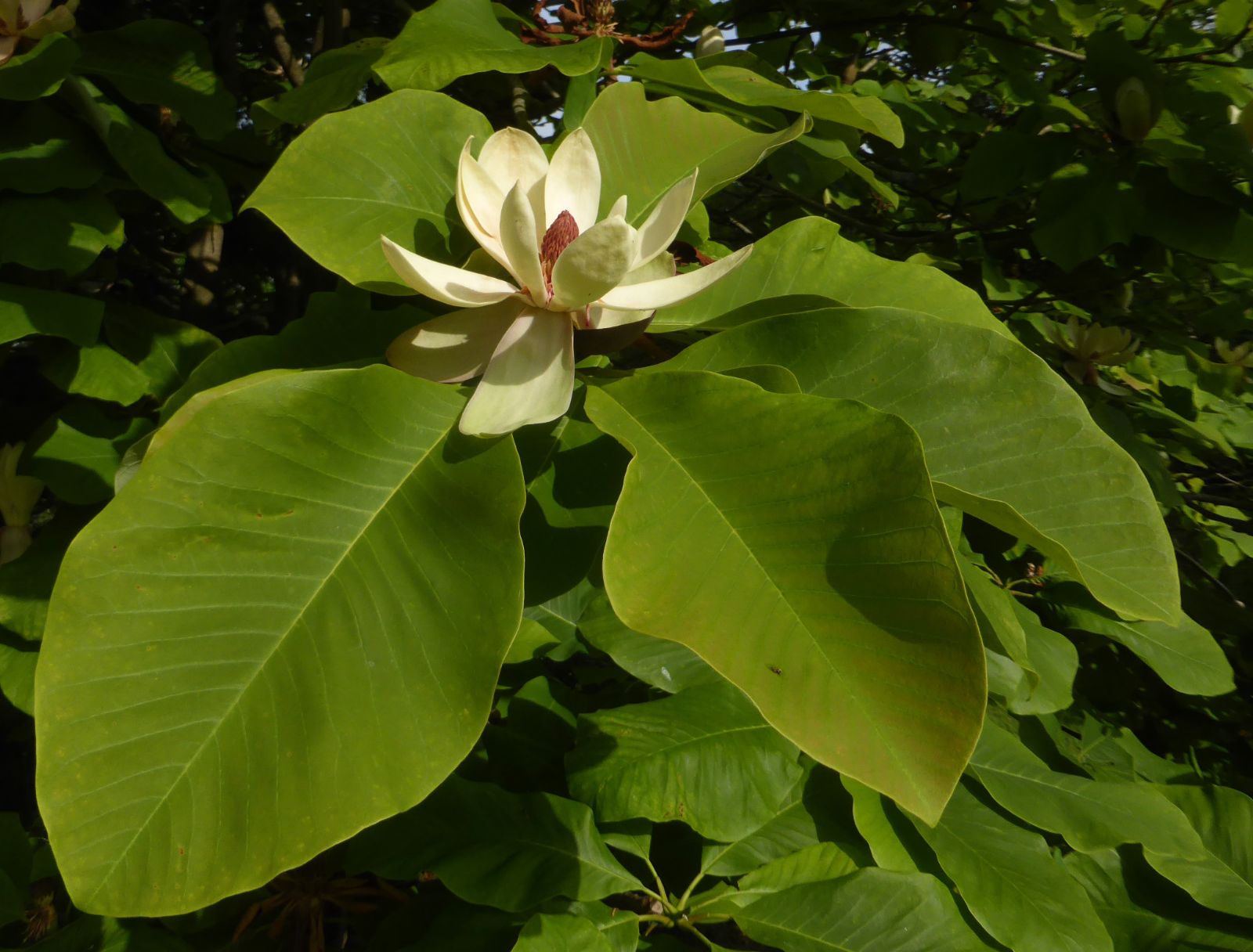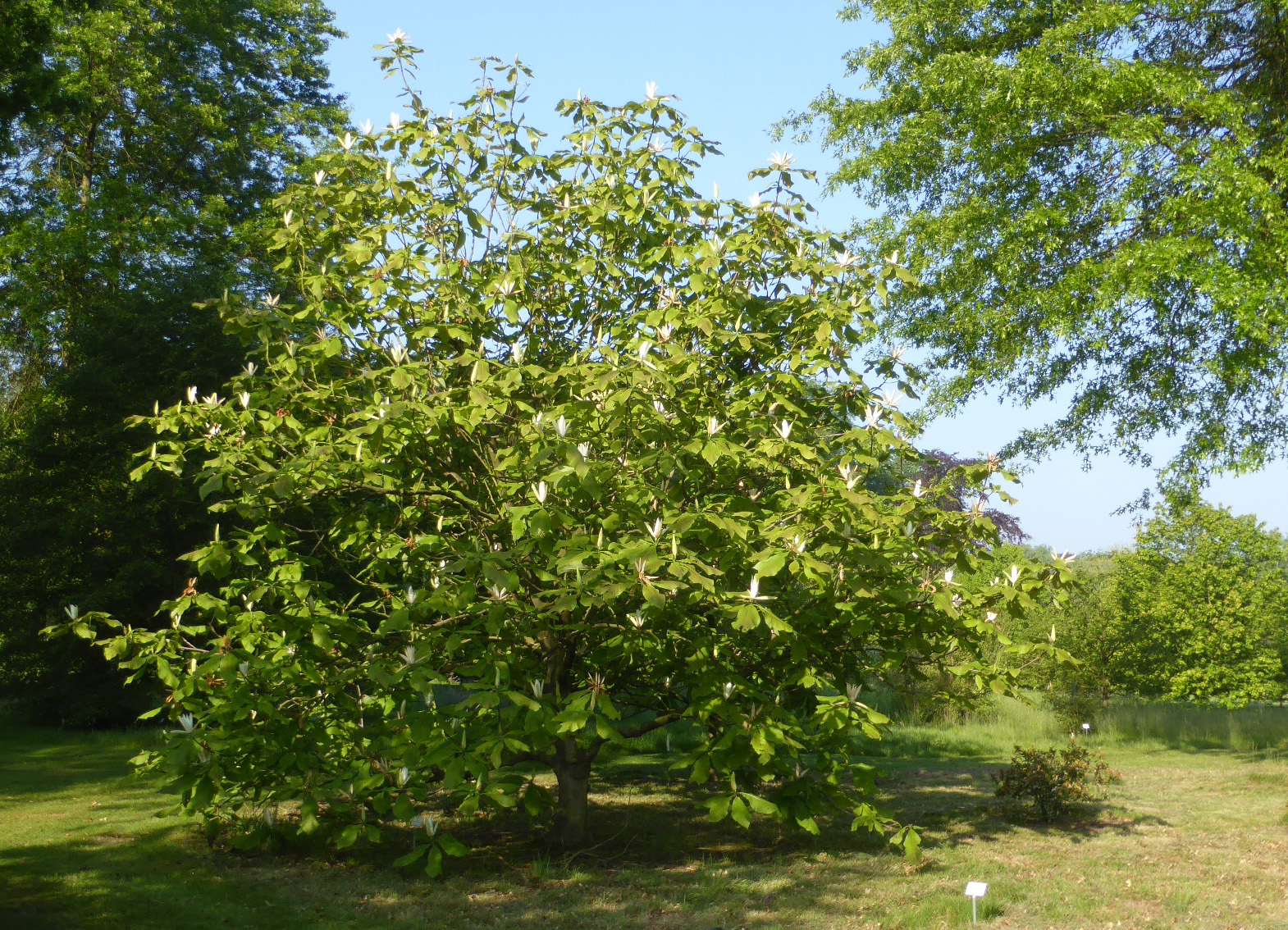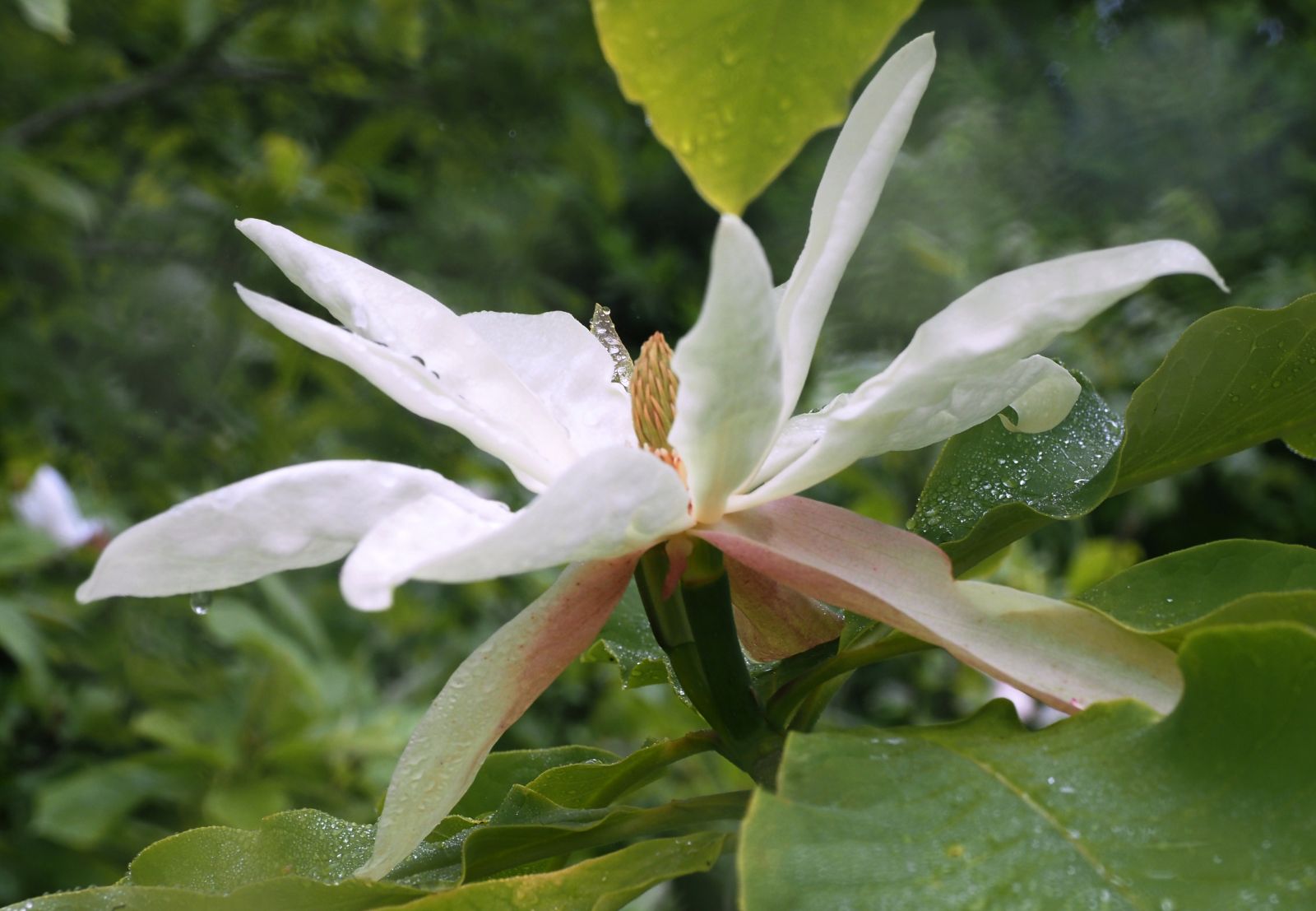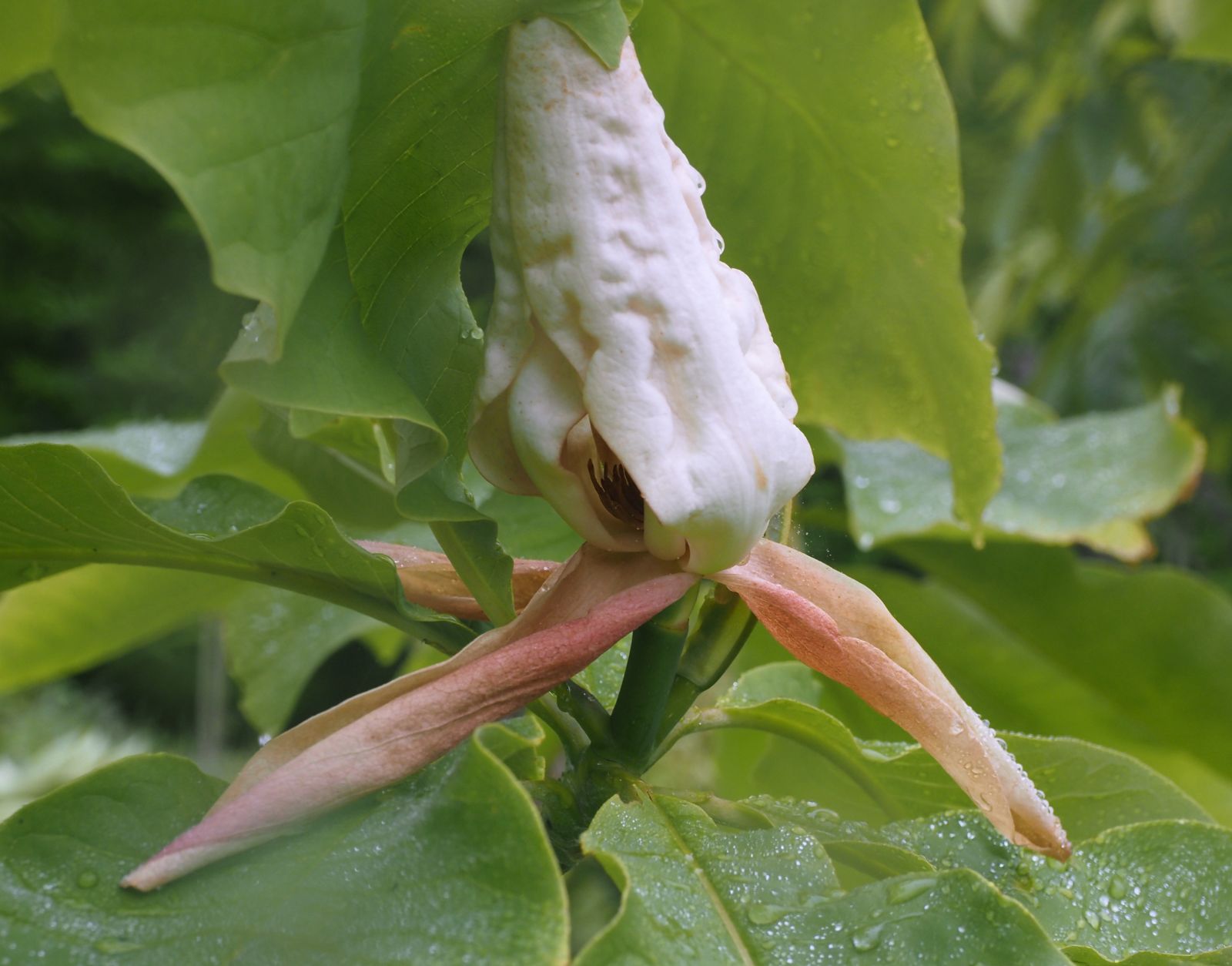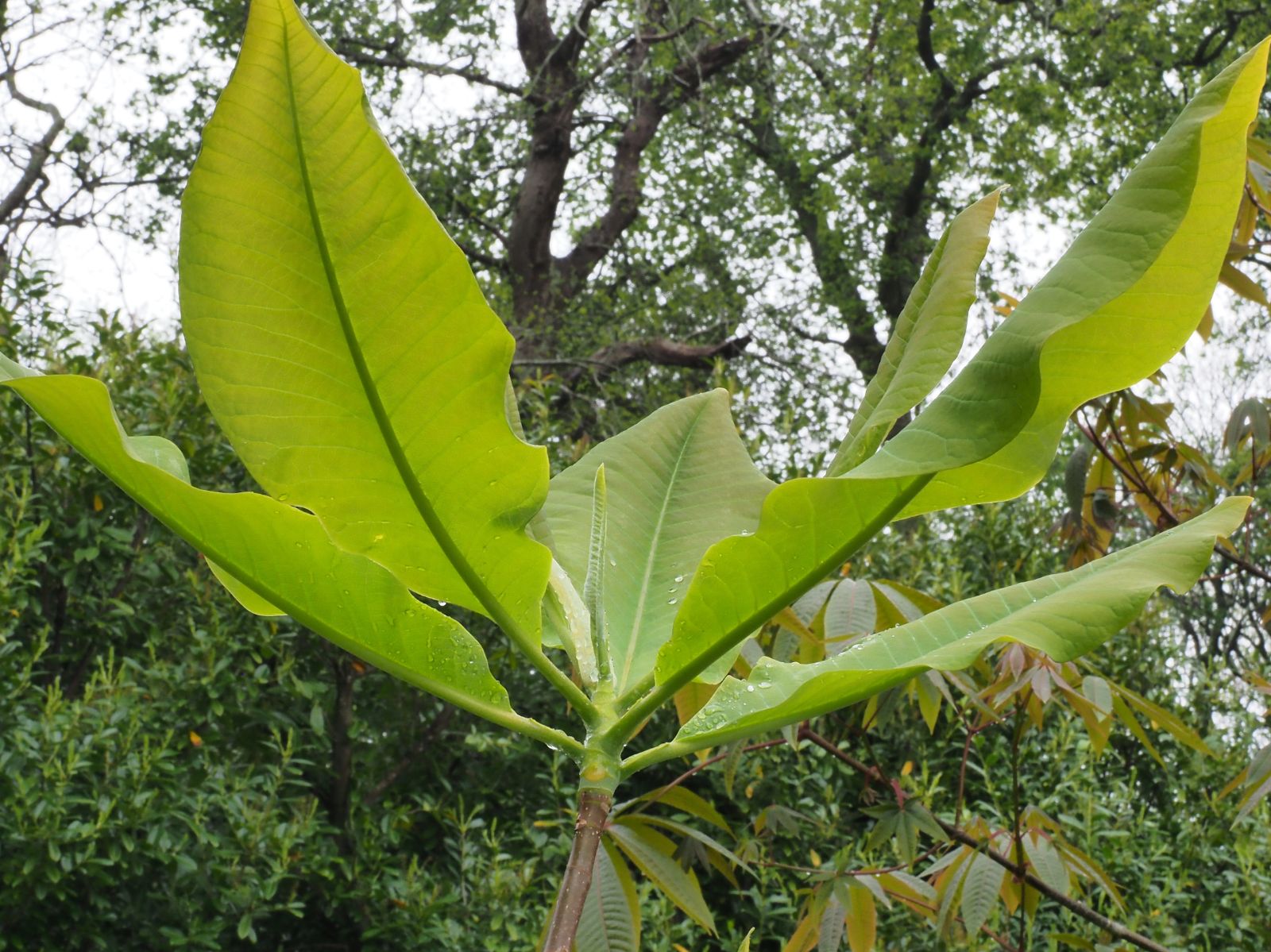Magnolia × pruhoniciana
Sponsor
Kindly sponsored by
The Roy Overland Charitable Trust

Credits
Julian Sutton (2022)
Recommended citation
Sutton, J. (2022), 'Magnolia × pruhoniciana' from the website Trees and Shrubs Online (treesandshrubsonline.
Genus
- Magnolia
- M. obovata × M. tripetala
Infraspecifics
Other taxa in genus
- Magnolia acuminata
- Magnolia × alba
- Magnolia amabilis
- Magnolia amoena
- Magnolia aromatica
- Magnolia biondii
- Magnolia × brooklynensis
- Magnolia campbellii
- Magnolia cathcartii
- Magnolia cavaleriei
- Magnolia caveana
- Magnolia champaca
- Magnolia changhungtana
- Magnolia chapensis
- Magnolia compressa
- Magnolia conifera
- Magnolia Cultivars A
- Magnolia Cultivars B
- Magnolia Cultivars C
- Magnolia Cultivars D
- Magnolia Cultivars E
- Magnolia Cultivars F
- Magnolia Cultivars G
- Magnolia Cultivars H–I
- Magnolia Cultivars J
- Magnolia Cultivars K
- Magnolia Cultivars L
- Magnolia Cultivars M
- Magnolia Cultivars N–O
- Magnolia Cultivars P
- Magnolia Cultivars Q–R
- Magnolia Cultivars S
- Magnolia Cultivars T
- Magnolia Cultivars U–V
- Magnolia Cultivars W–Z
- Magnolia cylindrica
- Magnolia dandyi
- Magnolia dawsoniana
- Magnolia de Vos and Kosar hybrids
- Magnolia decidua
- Magnolia delavayi
- Magnolia denudata
- Magnolia doltsopa
- Magnolia duclouxii
- Magnolia ernestii
- Magnolia figo
- Magnolia floribunda
- Magnolia × foggii
- Magnolia fordiana
- Magnolia foveolata
- Magnolia fraseri
- Magnolia fulva
- Magnolia globosa
- Magnolia × gotoburgensis
- Magnolia grandiflora
- Magnolia grandis
- Magnolia Gresham hybrids
- Magnolia guangdongensis
- Magnolia hookeri
- Magnolia insignis
- Magnolia Jury hybrids
- Magnolia × kewensis
- Magnolia kobus
- Magnolia kwangtungensis
- Magnolia laevifolia
- Magnolia lanuginosa
- Magnolia leveilleana
- Magnolia liliiflora
- Magnolia × loebneri
- Magnolia lotungensis
- Magnolia macclurei
- Magnolia macrophylla
- Magnolia martini
- Magnolia maudiae
- Magnolia nitida
- Magnolia obovata
- Magnolia officinalis
- Magnolia opipara
- Magnolia × proctoriana
- Magnolia rostrata
- Magnolia salicifolia
- Magnolia sapaensis
- Magnolia sargentiana
- Magnolia sieboldii
- Magnolia sinensis
- Magnolia sinica
- Magnolia sinostellata
- Magnolia × soulangeana
- Magnolia sprengeri
- Magnolia stellata
- Magnolia tamaulipana
- Magnolia × thomsoniana
- Magnolia tripetala
- Magnolia × veitchii
- Magnolia virginiana
- Magnolia × wieseneri
- Magnolia wilsonii
- Magnolia xinganensis
- Magnolia yunnanensis
- Magnolia yuyuanensis
- Magnolia zenii
USDA Hardiness Zone 7-9
RHS Hardiness Rating H5
This name covers all hybrids between Magnolia obovata and M. tripetala, including F2 and subsequent generations, as well as backcrosses to either parent. Known only from gardens, it has originated spontaneously at the Arnold Arboretum, MA (see ‘Silver Parasol’ below), and through controlled crosses made by Viktor Keskevič at Průhonice Park, Czechia, before 1952 (Jakl 2013; Spongberg & Weaver 1981) as well as later breeders. F2 seedlings have arisen at Průhonice; material has been distributed to other Czech and Belgian collections.
These hybrids are decidous, medium trees, with elliptic to ovate leaves of 20–45 × 10–22 cm, in false whorls. Flowers are white, 16–25 cm across, held erect at the ends of branches, with 11–12(–15) tepals, the outer three brownish-pink, reddish filaments and pink stigmas. They can most reliably be distinguished from the parents by their intermediate fruit characters as shown in the table (Jakl 2013):
| Follicles | Stamen scars | |
| M. obovata | (108–)130–163(–209 | (143–)169–195(–214) |
| M. × pruhoniciana | (58–)91–107(–145) | (92–)113–148(–159) |
| M. tripetala | (24–)51–63(–79) | (65–)76– 89(–114) |
'Silk Road'
Flowers moderately fragrant; tepals white, narrow. A backcross with M. tripetala by Dennis Ledvina, WI; a parent of the intersectional hybrid ‘Melissa Parris’.
'Silver Parasol'
Flowers in late spring to early summer (late May to June, Massachusetts), 20–25 cm across, sweetly fragrant; leaves only slightly glaucous beneath. Raised from seed of M. obovata at the Arnold Arboretum, and labelled as such until its hybridity was recognized; a probable sister seedling was found at Hunnewell Estate, MA (Spongberg & Weaver 1981).

